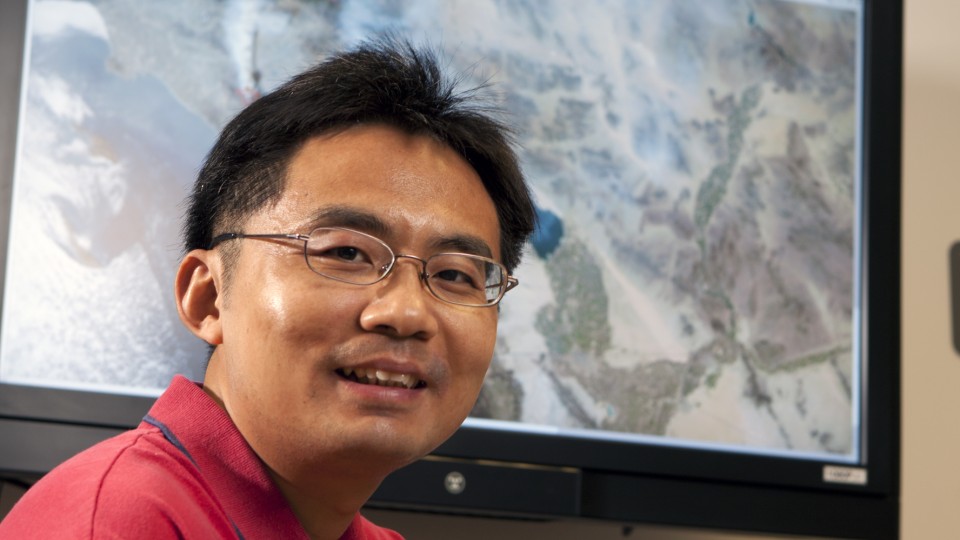· 3 min read
UNL researcher part of award-winning team working with NASA

A UNL associate professor has earned recognition for his contributions to a NASA research mission that aims to give scientists a revolutionary tool for measuring air pollution.
Jun Wang, associate professor of Earth and atmospheric sciences, is a member of the science team working on the TEMPO mission, which will use satellite-based sensors in space to continuously monitor air pollution throughout North America.
TEMPO – Tropospheric Emissions: Monitoring of Pollution – was awarded NASA’s Group Achievement Award for “success in capturing a major competitively awarded Earth Science Venture Class mission through outstanding professionalism and technical excellence.”
The TEMPO team consists of 20 scientists and is led by principal investigator Kelly Chance of the Harvard-Smithsonian Center for Astrophysics in Cambridge, Mass. If the project succeeds, it may lead to a day when monitoring of pollution is as common and useful as reporting and predicting the weather.
The 10-year, $90 million project was selected by NASA for funding from 14 proposals submitted to NASA’s Earth Venture Instrument program. Earth Venture missions are small, targeted science investigations that complement NASA’s larger missions.
With funding from several NASA grants, Wang studies the impacts of aerosol pollution on air quality, weather and climate. The UNL professor’s work on the TEMPO mission has included helping to write algorithms and requirements for the instrument that will be built to measure air pollution. He is also co-leader of the aerosol working group within the team.
TEMPO aims to change the way scientists measure and predict air quality. Currently, air pollution is most commonly measured once a day from space for a city or rural area.
The new sensor technology will measure air pollution continuously over the continental United States, Mexico and Canada and provide a clearer picture of the impacts of air pollution by measuring tropospheric ozone, ozone precursors, aerosols and clouds. Having such a data set will help provide further understanding and predictions of air quality and its effects on climate.
“Instead of measuring these things from the ground, from limited sites, with each city only having one or several sites, this will allow us to measure air pollution every hour at every location,” Wang said. “In the U.S., we have very vast territory, and by having measurements from space we can get a complete picture.”
According to NASA’s website, TEMPO will monitor air pollution from the Atlantic to the Pacific oceans and span from the tar sands in Canada as far south as Mexico City. Having this much data, the website says, will reduce uncertainty in air quality predictions by as much as 50 percent.
The team will have the instrument finished in 2017 and hope to launch in 2018.
“When TEMPO is launched, we are going to implement the algorithm with the real data and analyze that data,” Wang said. “It provides great opportunities for graduate students to get involved and gain valuable experiences by working with a team of world-leading scientists.”







